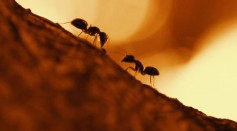nature
The Miracle of Birth of the Ancient Mosasaurs
New Sensitivity Study May Reveal ‘Terror Birds’ Hunted In Packs
With a Bit of Luck and Inspiration, One 4-Year-Old Boy Found a Dinosaur in Texas
Giving a Voice to Long-Lost—New ‘Terror Bird’ Species Reveals a Knack for Being on the Hunt
Goldfish Invade Colorado Lake
Can Life Form in Another Solar System? Scientists Find Building Blocks for Life Around Million-Year-Old Star
The Quandaries of a Modern Ecologist—How Ecological ‘Flash Mobs’ Are More Like Magnets Than You Might Think
With the Help of ALMA Astronomers Find Complex Organic Molecules in Infant Solar System
How One Endangered Species Is Making A Change For the Better—Eating Sweeter Flora Instead
The Energy for a New Crawl—Galápagos Tortoises Feast on Invasive Plants for a New Foraging Technique
A Century of Climate Change—How the Complex Landscape of the Appalachian Forests Will Fare
Bringing Ancient White Seashells Back to Colorful Life
Land Based Food May Not Be Enough to Save Polar Bears

The Foodies Beneath Our Feet—Urban Ants Like Human Food Too
Most Popular

AI Revolution in Medical Education: Transforming How Healthcare Professionals Learn

Optimizing Complex Catalog Systems with Graph Theory and Indexing

Out of Office, Not Out of Mind: Planning for Employee Holiday Absences

Nikolay Karpenko Biography, Photo, Career, Accomplishments





